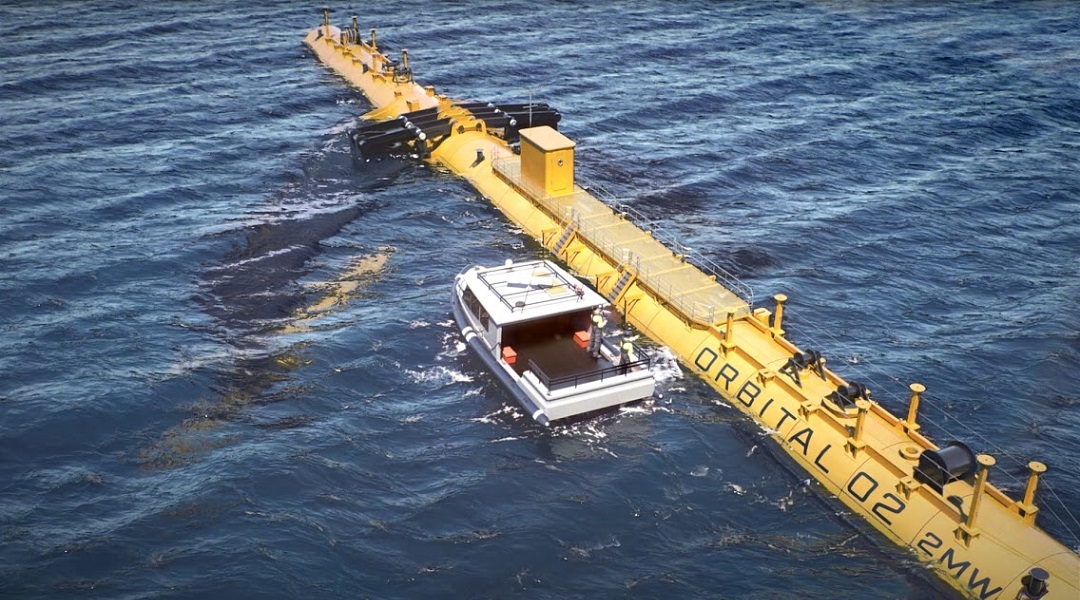Orkney is an archipelago in the North of Scotland and it is here that the company Orbital Marine Power will install its upcoming O2 2MW floating tidal turbine. It will be the world’s most powerful tidal turbine when it enters operation at the European Marine Energy Centre (EMEC) in 2020.
Orbital Marine Power’s technology runs against the established logic of tidal turbines, which are commonly operated like underwater wind turbines built on the seabed. The Scottish company believes that the unique operational and engineering challenges of tidal stream sites requires a more bespoke solution: a floating turbine that contains a large, watertight structure that allow for onboard power conversion, transformer, and switching equipment. On their website, the company say that their “turbines can be incorporated into multi-turbine arrays exporting down a single cable without the need for new underwater hub technology.”
Orbital has been working with Svenska Kullagerfabriken (SKF)—supplier of critical bearing and sealing components— since 2011. SKF delivered components for both the 250kW and SR2000-2MW units, which produced an excess of 3GWh of electricity over its initial 12-month continuous test programme at EMEC.
The latest project builds on this experience. Unlike the first two plants, the Swedish bearing and seal manufacturing company is now providing a fully integrated drivetrain solution covering both nacelles and pitching hubs for the tidal turbine.
According to Orbital Marine’s CEO, Andrew Scott, the focus of the collaboration is to deliver a total, innovative solution that enables low cost tidal stream energy. He believes that the pending commercializing of the tidal turbine technology will create an entirely new global market for power generation equipment and services. SKF also sees enormous potential in the floating tidal technology due to its low installation and operating costs.

















